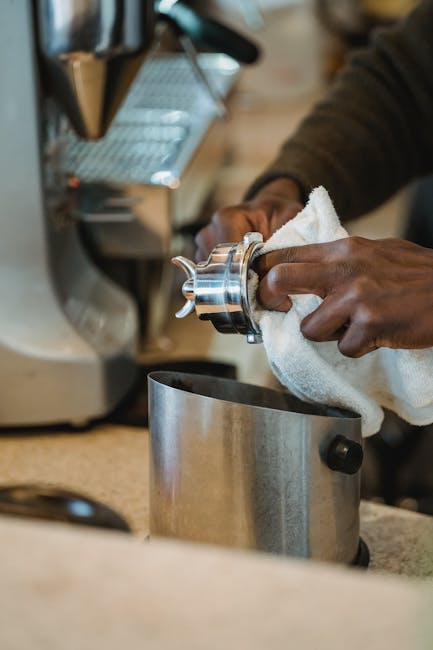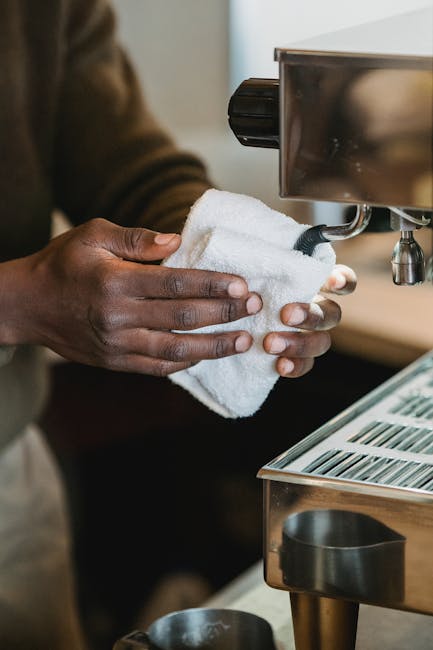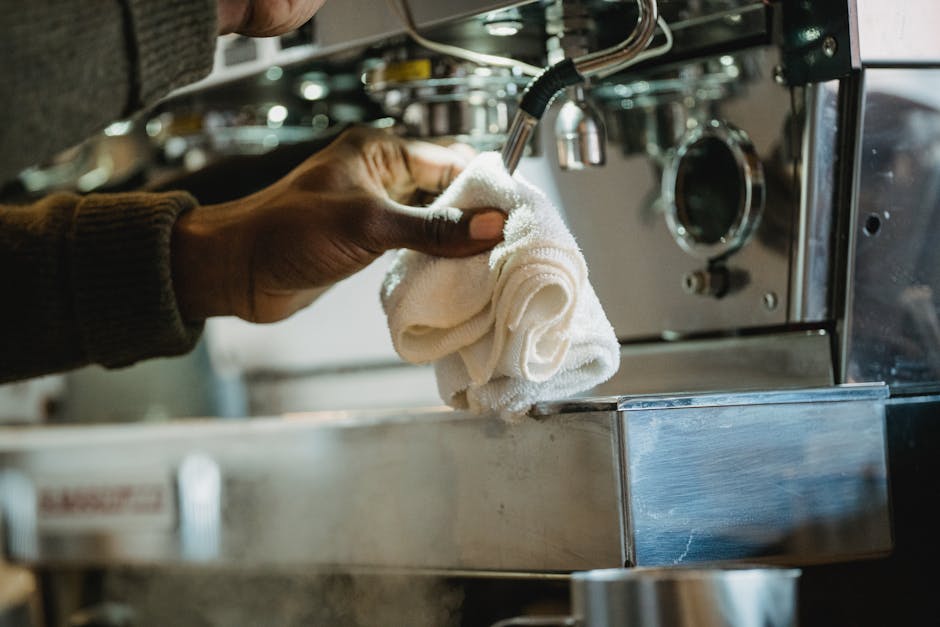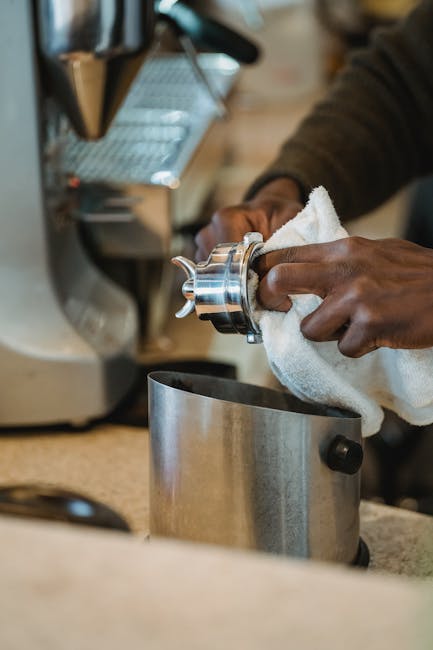Ultimate Guide to Coffee Machine Maintenance & Cleaning: A Deep Dive into Keeping Your Brew Perfect
A delicious cup of coffee starts with a clean coffee machine. Neglecting regular maintenance can lead to poor-tasting coffee, machine malfunctions, and even health risks. This comprehensive guide will walk you through the essential cleaning and maintenance procedures for various types of coffee machines, ensuring your daily brew remains perfect for years to come.

Understanding Your Coffee Machine Type
The cleaning and maintenance requirements vary significantly depending on your coffee machine type. Common types include:
- Drip Coffee Makers: The most common type, using a filter basket and carafe.
- Espresso Machines: Produce concentrated coffee using high pressure.
- Moka Pots: Stovetop espresso makers producing a strong brew.
- French Presses: Manual brewing method using a plunger to separate grounds from coffee.
- Pod Coffee Machines (e.g., Nespresso, Keurig): Use pre-packaged coffee pods for convenience.
- Automatic Drip Coffee Makers: Offer features like programmable timers and automatic shutoff.
The following sections detail cleaning procedures tailored to these machine types, but general principles apply to most models.
Daily Cleaning: The Foundation of Coffee Machine Hygiene
Daily cleaning is crucial for preventing coffee residue buildup, which can affect the taste and aroma of your coffee. For most machine types, this involves these simple steps:

- Empty the carafe/drip tray: Immediately after brewing, empty any remaining coffee and discard grounds.
- Rinse the carafe: Wash the carafe with warm, soapy water, ensuring to remove any coffee stains.
- Rinse the filter basket: Remove and rinse the filter basket thoroughly under running water.
- Wipe down the exterior: Use a damp cloth to wipe down the exterior of the machine, removing any spills or splatters.
- Check the water reservoir: Empty and rinse the water reservoir (if removable) to prevent mineral buildup.
Weekly Cleaning: Addressing Deeper Residue
Weekly cleaning goes beyond daily rinsing, targeting the accumulation of coffee oils and minerals. This is particularly important for drip coffee makers and espresso machines.
Drip Coffee Maker Weekly Cleaning:
- Descaling: Use a descaling solution (white vinegar and water mixture or commercial descaler) to remove mineral deposits. Follow the manufacturer’s instructions carefully.
- Deep clean the carafe: Use a bottle brush or similar cleaning tool to thoroughly clean the inside of the carafe, removing stubborn stains.
- Clean the filter basket thoroughly: If your filter basket is dishwasher-safe, wash it on a high-temperature cycle. Otherwise, use a specialized cleaning brush.
Espresso Machine Weekly Cleaning:
- Backflush: Use an espresso machine cleaning tablet or a solution of water and cleaning powder to backflush the machine, removing coffee oils and residue from the group head.
- Clean the milk frother (if applicable): Follow the manufacturer’s instructions for cleaning the milk frother, often involving disassembly and thorough cleaning with warm, soapy water.
- Wipe down all surfaces: Thoroughly wipe down all parts of the espresso machine with a damp cloth.
Monthly Cleaning: Preventive Maintenance
Monthly cleaning is key to long-term maintenance and preventing major issues. This often involves more in-depth cleaning procedures.

- Deep clean the water reservoir: Thoroughly scrub the water reservoir with a bottle brush and baking soda to remove stubborn mineral deposits.
- Check and clean internal parts (if accessible): Consult your owner’s manual for instructions on accessing and cleaning internal components.
- Check the heating element (if accessible): Carefully inspect the heating element for any buildup or damage. This step usually involves checking your manual.
Troubleshooting Common Coffee Machine Issues
Even with regular cleaning, you might encounter some common problems. Understanding the causes and solutions can save you time and money.
Weak Coffee:
- Insufficient coffee grounds: Use the recommended amount of coffee grounds.
- Clogged filter: Replace or clean the filter.
- Mineral buildup: Descale the machine.
Coffee Machine Not Brewing:
- Power cord not plugged in: Check the power connection.
- Empty water reservoir: Fill the water reservoir.
- Malfunctioning heating element: Seek professional repair.
Gurgling Sounds:
- Air bubbles in the system: Run a cycle with only water to clear any air bubbles.
- Overfilling the water reservoir: Avoid overfilling the reservoir.
Choosing the Right Cleaning Products
Using the correct cleaning products is essential. Avoid harsh chemicals that could damage your machine. Generally, white vinegar and water, baking soda, and commercial descaling solutions are safe and effective options.
Extending the Lifespan of Your Coffee Machine
Regular maintenance significantly extends the lifespan of your coffee machine. By following the cleaning procedures outlined above, you can prevent premature wear and tear, keeping your coffee machine in optimal condition for longer.
Conclusion
Maintaining your coffee machine is crucial for ensuring the quality of your coffee and prolonging its lifespan. By following the cleaning and maintenance steps detailed in this guide, you can enjoy delicious, consistent brews for years to come. Remember to always refer to your manufacturer’s instructions for specific cleaning and maintenance guidance.

